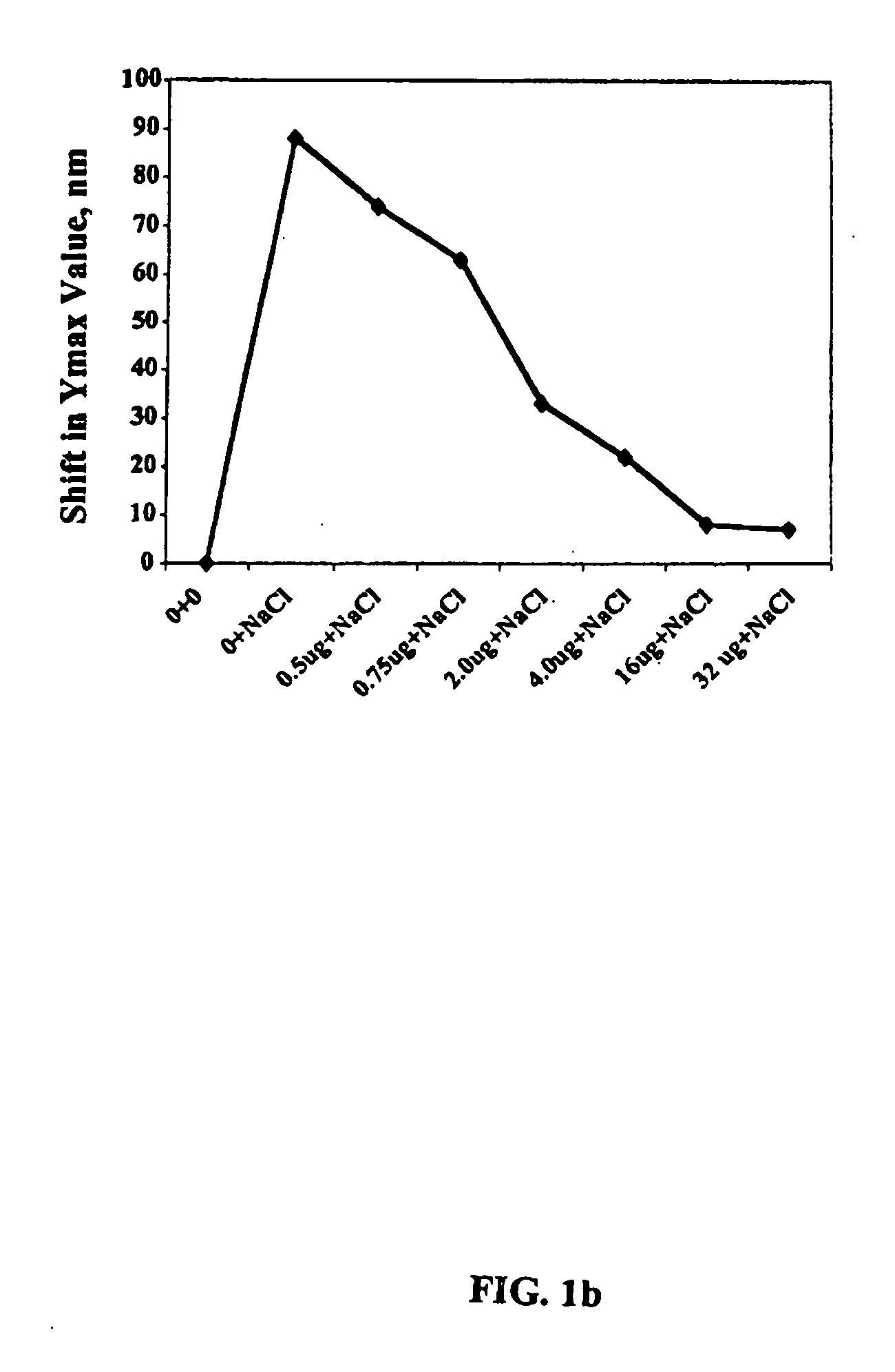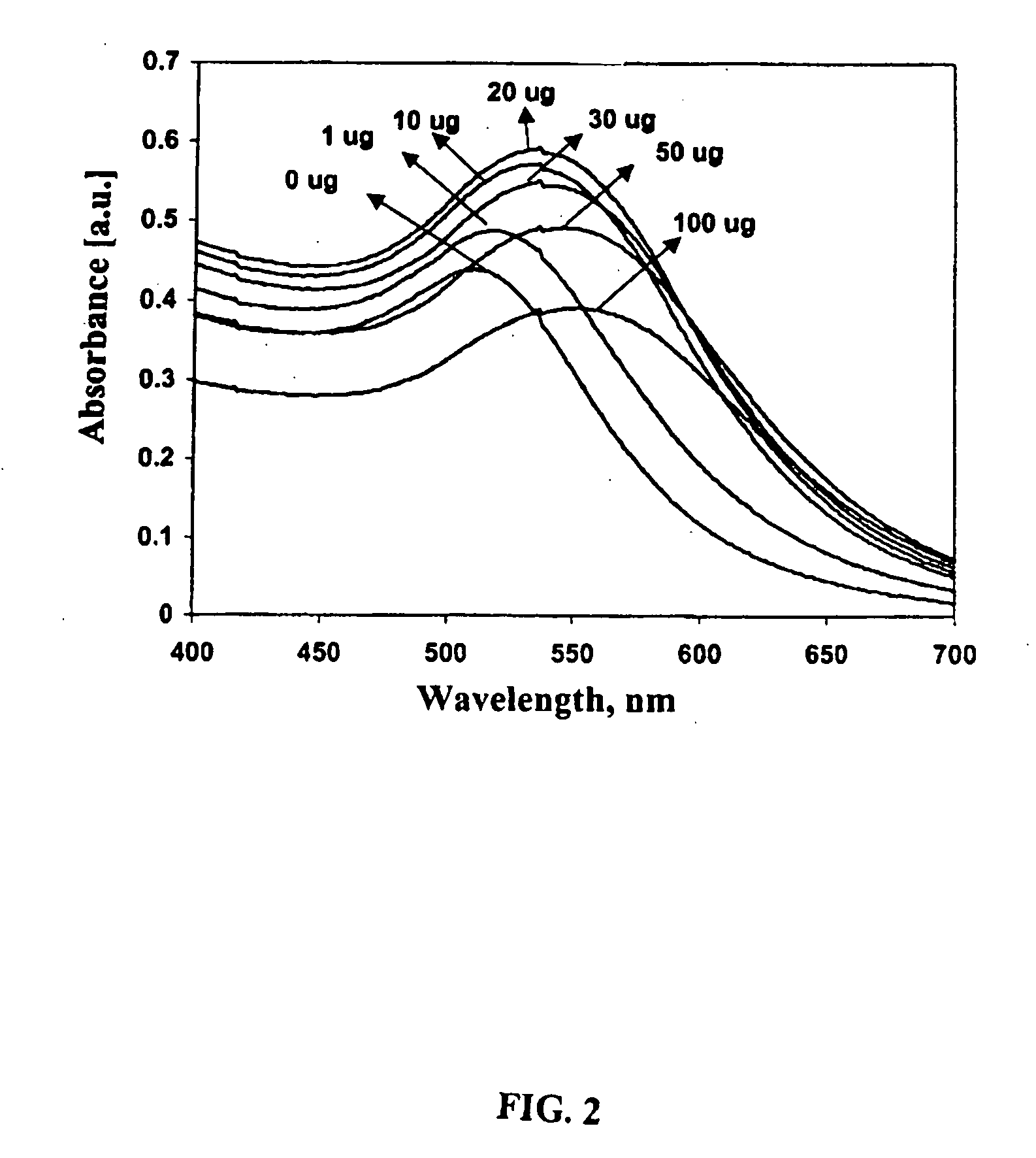Nanoparticles for therapeutic and diagnostic applications
a technology of nanoparticles and nanoparticles, applied in the field of nanoparticles, can solve the problems of unacceptably toxic system administration of other agents, limited therapeutic or diagnostic efficacy of therapeutic and diagnostic agents that have been isolated from natural sources or synthesized de novo, etc., to facilitate the use of compositions, facilitate multiple imaging modes, and improve signal sensitivity or resolution
- Summary
- Abstract
- Description
- Claims
- Application Information
AI Technical Summary
Benefits of technology
Problems solved by technology
Method used
Image
Examples
example 1
Preparation of Gold Nanoparticles
[0065] In a typical experiment, 50 ml of an aqueous solution containing 4.3 mg of solid sodium borohydride was added to 100 ml of 100 μM aqueous solution of tetracholoroauric acid under vigorous stirring. After overnight stirring, the gold nanoparticles thus formed were filtered through a 0.22 μm filter.
example 2
Determination of the Saturation Concentration of Individual Agents on Gold Nanoparticles
[0066] The individual saturation concentrations of a monoclonal anti-VEGF antibody agent and a gemcitabine agent to gold nanoparticles were determined in the following manner. Eight tubes containing 1 ml of gold nanoparticles each were incubated with increasing concentrations of the anti-VEGF antibody for 30 minutes, followed by an aggregation assay involving incubation with 100 μl of a 10% NaCl solution. Approximately 15 min. after the addition of the NaCl solution, the UV-Visible spectra were recorded using a Shimadzu model system (UV2401 PC), and the saturation concentration of the antibody was determined.
[0067] The attachment of gemcitabine to the gold nanoparticles and the determination of its saturation concentration were performed similarly.
[0068] Results: With no agents linked to their surface, gold nanoparticles should aggregate immediately upon addition of a 10% NaCl solution and the...
example 3
Preparation of a Gold Nanoparticle Having Two Agents Linked Thereto
[0070] A composition having both gemcitabine and anti-VEGF antibody linked to the surface of gold nanoparticles was prepared by incubating gold nanoparticles with each agent at a concentration representing 50% of the saturation concentration of each individual agent. Thus, gold nanoparticles were first incubated for 30 min. at room temperature with 10 μg / ml of gemcitabine, followed by another 30 min. incubation with 2 μg / ml of the monoclonal anti-VEGF antibody. In order to confirm the linkage of both agents to the gold nanoparticles, aggregation experiments were performed by adding 100 μl of a 10% NaCl solution to solutions prepared as above, followed by incubation for 15 min. The UV-Visible spectra were subsequently recorded.
[0071] Results: A change in absorbance of the gold nanoparticles after incubation with both antibody and gemcitabine below their individual saturation points was observed (FIG. 3a). The result...
PUM
| Property | Measurement | Unit |
|---|---|---|
| size | aaaaa | aaaaa |
| size | aaaaa | aaaaa |
| temperature | aaaaa | aaaaa |
Abstract
Description
Claims
Application Information
 Login to View More
Login to View More - R&D
- Intellectual Property
- Life Sciences
- Materials
- Tech Scout
- Unparalleled Data Quality
- Higher Quality Content
- 60% Fewer Hallucinations
Browse by: Latest US Patents, China's latest patents, Technical Efficacy Thesaurus, Application Domain, Technology Topic, Popular Technical Reports.
© 2025 PatSnap. All rights reserved.Legal|Privacy policy|Modern Slavery Act Transparency Statement|Sitemap|About US| Contact US: help@patsnap.com



